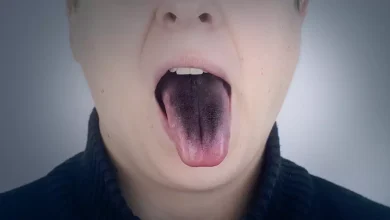All about Pulmonary Embolism

What is Pulmonary Embolism?
A pulmonary embolism is a medical condition where the pulmonary artery which supplies blood to the lungs gets blocked. In most instances, the blood clot begins in a deep vein in the leg and travels to the lung. It’s very rare that the clot forms in a vein in some other part of the body. Pulmonary embolism is one of the most common heart and blood vessel diseases across the globe and ranks third behind heart attack and stroke. Sometimes pulmonary embolism may be life-threatening because one or more clots block blood flow to the lungs but it can be averted by prompt treatment.
What are the Types of Pulmonary Embolism?
The types of pulmonary embolism are based on severity. Researchers have divided pulmonary embolism into three types including:
Acute Pulmonary Embolism: Acute pulmonary embolism is the most common among the three types and it’s difficult to diagnose because symptoms can differ from person to person. The general symptoms of acute pulmonary embolism include dyspnea, cough, and chest pain.
Subacute Pulmonary Embolism: The subacute pulmonary embolism usually develops slowly and is difficult to diagnose and hence there can be delays in treatment, leading to poorer outcomes. People with this condition have a higher mortality rate as compared to acute pulmonary embolism. The symptoms of subacute pulmonary embolism can develop in 2 to 12 weeks. The most common symptoms of subacute pulmonary embolism can include progressive dyspnea, pleuritic chest pain, and coughing up blood.
Chronic Pulmonary Embolism: In chronic PE, the residual blood clots may remain tied to the walls of the pulmonary vessels after treatment and it can even cause chronic thromboembolic pulmonary hypertension.

What are the Symptoms of Pulmonary Embolism?
The symptoms of pulmonary embolism may include:
- Unexpected shortness of breath
- Unexplained intense pain in the chest, arm, shoulder, neck, or jaw.
- Cough with or without bloody mucus.
- Blanch, damp, or bluish skin.
- Fast heartbeat
- Unrestrained sweating.
- Feeling anxious, lightheaded, faint, or passing out.
- Wheezing.
- Lightheadedness or dizziness
- Fever
- Swelling or leg pain, or both
What are the Causes of Pulmonary Embolism?
You can develop pulmonary embolism if a cluster of material, usually a blood clot, gets stuck in an artery of your lungs, and blocks the flow of blood. Blood clots generally come from the deep veins of your legs, a condition called deep vein thrombosis.
In many instances, multiple clots are inculpated. The parts of the lung served by each blocked artery can’t get blood which can be life-threatening. This condition is known as a pulmonary infarction which makes it quite difficult for your lungs to render oxygen to the rest of your body.
Sometimes, blockages in the blood vessels are may occur because of substances other than blood clots, like:
- Fat from an inside of a ruptured bone
- Portion of a tumor
- Air bubbles
Some common causes of pulmonary embolism may include:
- Blood collecting or “pooling” in a specific part of your body generally in a leg or arm. Blood mostly pools after long periods of idleness, like after surgery or bed rest.
- Injury to a vein, which may happen because of fracture or surgery.
- Some other medical conditions, like a cardiovascular disease which may include congestive heart failure, atrial fibrillation, heart attack, or stroke.
- A growth or drop in your blood’s clotting factors. Uplifted clotting factors can happen with some kinds of cancer or in a few people using hormone replacement therapy or birth control pills.
- Abnormal or low clotting factors may also occur because of blood clotting disorders.

What are the Risk Factors of Pulmonary Embolism?
Risk factors of pulmonary embolism may include:
- Clotting of blood in the leg, or deep vein thrombosis.
- Being idle or inactive for long periods whilst traveling in a motor vehicle, train, or plane.
- Recently suffered a trauma or injury to a vein, perhaps after a recent surgery, fracture, or from varicose veins.
- Taking birth control pills (oral contraceptives) or hormone replacement therapy also increases the risk of pulmonary embolism.
- Smoking tobacco
- Had a heart failure or stroke.
- Obesity
- Pregnancy
- Received a central venous catheter through the arm or leg.
What are the Complications of Pulmonary Embolism?
In many cases, pulmonary embolism can be life-threatening as nearly one-third of people with an undiagnosed and untreated pulmonary embolism do not survive. But the number drops dramatically if the condition is diagnosed and treated on time.
Pulmonary embolisms also can cause pulmonary hypertension, a disorder where the blood pressure in the lungs on the right side of the heart becomes quite high. When there are blockages in the arteries inside the lungs, the heart has to function harder to pump blood through those vessels. This raises blood pressure and in due course weakens the heart.
In rare instances, small clots known as emboli remain in the lungs and scarring grows in the pulmonary arteries over time and restricting the blood flow and leading to chronic pulmonary hypertension.
How Pulmonary Embolism is Diagnosed?
Tests to diagnose Pulmonary embolism include:
- Blood tests which may include the D-dimer test).
- Computed tomography (CT) angiogram.
- Ultrasound of your leg which helps to detect blood clots in the legs, or deep vein thrombosis, which can transfer to the lungs and cause more harm.
- A ventilation/perfusion (V/Q) scan, in case you are not capable of getting contrast for a CT scan. This test helps to check clots in your lung.
- Pulmonary angiogram.
- X-ray in the chest.
What are the Treatment Options Available for Pulmonary Embolism?
Pulmonary embolism can be treated with medication and surgery.
Medicines given to treat pulmonary embolism include:
Blood thinners: Blood-thinning medicines known as anticoagulants are given to avert existing clots from becoming bigger and forming new clots whilst your body works to disperse the clots. Heparin is a normally used anticoagulant that can be given via vein or injected under the skin. It acts swiftly and is generally given with an oral anticoagulant, like warfarin (Jantovin), till the oral medicine becomes effective.
The latest oral anticoagulants act swiftly and have lesser interconnection with other medicines. A few of them have the benefit of being given through mouth till they’re fruitful, without the requirement for heparin. But, all anticoagulants have side effects, among which bleeding is quite common.
Clot dissolvers: Whilst clots normally dissolve on their own, at times the thrombolytic medicines that dissolve clots that are given through a vein dissolve the clots swiftly. Because these clot-busting medicines can lead to sudden and serious bleeding, they generally are given only during life-threatening situations.
Surgeries
Clot removal: Doctors may remove the big, life-threatening clot in your lung, by using a thin, pliable catheter threaded through your blood vessels.
Vein filter: A catheter may be used to fix a filter in the body’s main vein, the inferior vena cava, that spreads from your legs to the right side of your heart. The filter can aid in stopping the clots from going to your lungs. This process is generally used only for those who can’t take anticoagulant drugs or those who get blood clots despite the use of anticoagulants. Some filters can be taken off when they are not required anymore.
Living with Pulmonary Embolism
While a pulmonary embolism can be life-threatening, most people with this condition survive after proper treatment but they are required to learn how to live with the risk of recurrence. Most patients with pulmonary embolism make a full recovery during weeks to months after the beginning of the treatment and don’t have any long-term effects and they can walk and do light housework right away, but they may get tired easily or feel short of breath. You have to make some changes in your eating habits and avoid certain foods like foods that are rich in vitamin K, alcohol, and a few over-the-counter medicines including aspirin and sleeping pills. Also, you have to regularly visit your doctor to prevent or treat further complications. Regular exercise, drinking plenty of fluids, and avoiding alcohol, and tobacco products are important to stop its recurrence.
Whom to Consult?
If you notice symptoms such as black poop, a bad headache, or a bruise that’s getting bigger then immediately contact your doctor and take the necessary tests to check the reasons behind them. Get immediate treatment if you have pulmonary embolism symptoms and it’s important to get a quick diagnosis and treatment in such instances. Be on the lookout for symptoms if you have risk factors for a pulmonary embolism and what steps you can take to prevent it.




